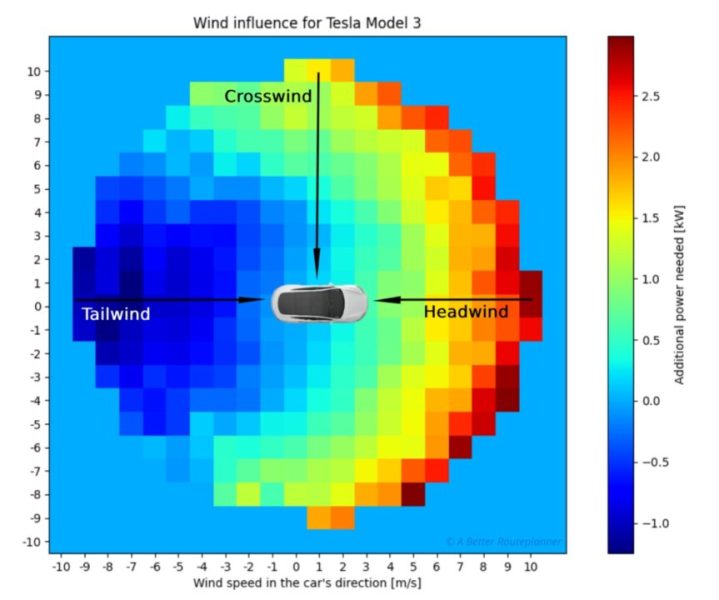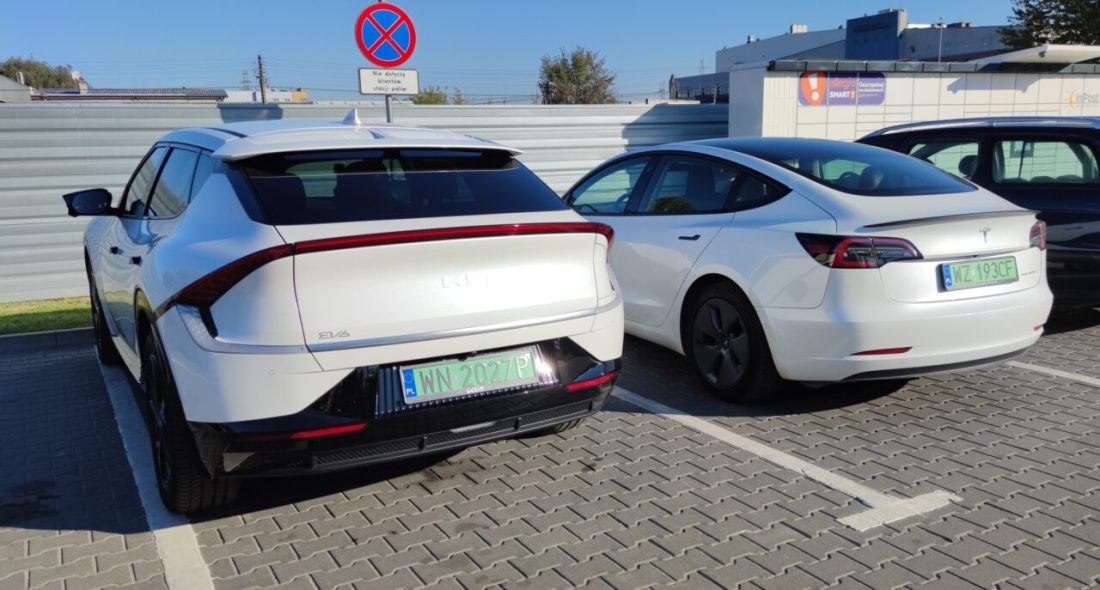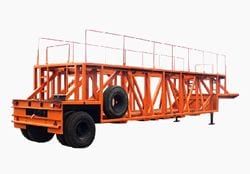
How the wind affects the energy consumption of an electric vehicle. ABRP Shows Calculations For Tesla Model 3
Arguably the best route planner for EVs, A Better Route Planner (ABRP) has an interesting blog post showing the effect of wind on an EV's energy consumption. The table is for Tesla Model 3, but can of course be applied to other electricians considering different drag coefficients (Cx / Cd), front surface (A) and side surface.
Wind and energy consumption in Tesla Model 3 at speeds of 100 and 120 km / h
Obviously, the data collected by ABRP shows that the biggest problem is the wind blowing in front of the car. At 10 m/s (36 km/h, strong gusts) the vehicle may need an additional 3 kW to overcome the air resistance. Is 3 kW a lot? If a Tesla Model 3 consumes 120 kWh / 16,6 km at 100 km / h (see TEST: Tesla Model 3 SR + "Made in China"), it will need 120 kWh to cover 1 km - exactly 19,9 hours of driving .
An additional 3 kWh will provide 3 kWh, so consumption is 15 percent more and range is 13 percent less. ABRP gives even more meaning: + 19 percent, so a strong wind from the head consumes almost 1/5 of the energy!
And it's not that we will recoup all the losses after the turn. Even if we have a tailwind of 10 m / s, the power consumption will decrease by about 1-1,5 kW. saving 6 percent... It's very simple: the wind blowing from behind at a speed lower than the speed of the car, causes such air resistance, as if the car is driving a little slower than it actually is. Therefore, there is no way to recover as much as we lose with normal driving.
Not less important side windwhich is often underestimated. At 10 m / s gusts, the Tesla Model 3 may require 1 to 2 kW to overcome air resistance, ABRP reports. increase in energy consumption by 8 percent:

The influence of wind on the energy demand of a moving car. Headwind = Headwind, Upwind, Tailwind = Stern, Leeward, Crosswind = Crosswind. Wind speed in meters per second on the lower and side scales, 1 m / s = 3,6 km / h. In addition to the required power depending on the wind strength (c) ABRP / source
The Tesla Model 3 is an extremely low Cx 0,23 car. Other cars have more, such as the Hyundai Ioniq 5 Cx's drag coefficient of 0,288. In addition to the drag coefficient, the frontal and side surfaces of the car also matter: the higher the car (passenger car < crossover < SUV), the larger they will be, and the greater the resistance. Consequently, cars that are crossovers and give drivers more space use more energy.
Note from the editors www.elektrowoz.pl: during the commemorative test of the Kia EV6 vs Tesla Model 3, we had a wind from the north, i.e. on the side and slightly behind, at a speed of several kilometers per hour (3-5 m / s). The Kia EV6 may suffer more from this due to its taller and less rounded silhouette.

This may interest you:
